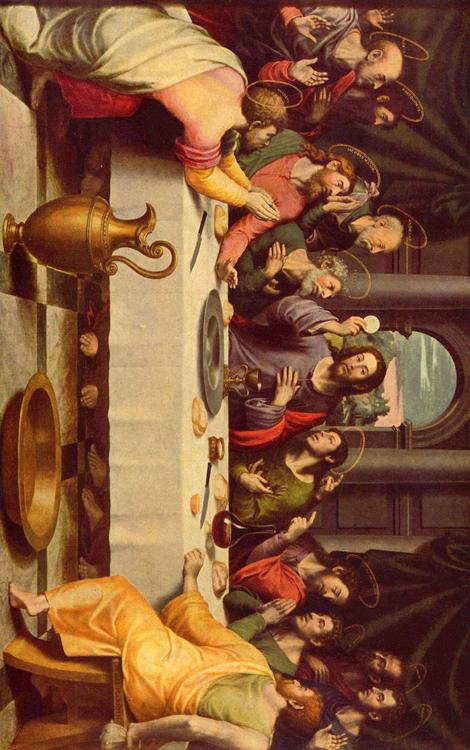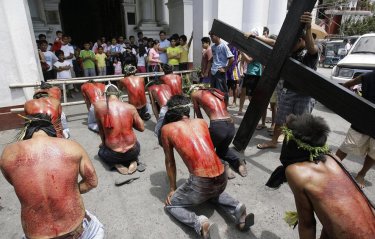In some parts of the Philippines,
Holy Week has become a sort of street opera for tourists – with multiple crucifixions, marathon chants and a myriad of flagellants. This week-long spectacle draws thousands of participants, as well as interested spectators.
At the beginning of the week, people engage in marathon chanting of the Christ’s Passion in their little makeshift chapels. The devout singers are mostly comprised of old ladies who take their turns in singing hymns from the pages of the bible. This is a twenty four hour commitment which continues up to Black Saturday, as the religious await the Lord’s resurrection.
Be warned that many of these street tents are located near hotels and Inns and they broadcast their chants over loud speakers so you may want to re-think where you find lodging. During the day is one thing, but being kept up all night might ruin your daytime activities.
Meanwhile, other people are kept busy preparing their religious floats for the
Holy Week processions. These are owned by the more affluent residents of the town and are mostly handed down from generation to generation and kept in impeccable condition due to their belief that the figures on their carriage guide them to a bountiful and comfortable life. Each carriage is decorated with gold and bronze plated frames and adorned with cloying flowers and set in blown glass and candlelight.
By three o’clock on Good Friday, the whole town is imbibed in a seemingly sullen mood. The pious kneel before household altars to recite various litanies. Some religious fanatics flog themselves to fulfill vows of penitence. Still others, test amulets, which they vow are authentic and would protect them from any harm, physical or otherwise. At Mount Banahaw, a supposedly sacred mountain in the province of Quezon, pilgrims from various religious sects and cults worship their deity at caves, rivers, rocks, waterfalls, streams, pools and springs until the dawn of Black Saturday.
Easter Sunday is the culmination of the whole commemoration of Holy Week. Unlike the previous days, this is a time for joy and merriment. The mood is festive and the people are busy preparing an Easter feast. A theatrical play takes place at dawn, the risen Christ meeting his sorrowful Mother. The two images come from different sides of the street and meet at the town church’s facade. The people clap and cheer and once again, sing praises of hymn.
It is truly a unique experience for a tourist to witness the Filipino’s celebration of Holy Week. For the locals, this is where religious fervor, theatrics and camaraderie blissfully collide.
Source:
http://www.philippinesinsider.com/events-festivals-holidays/holy-week-in-the-philippines/





